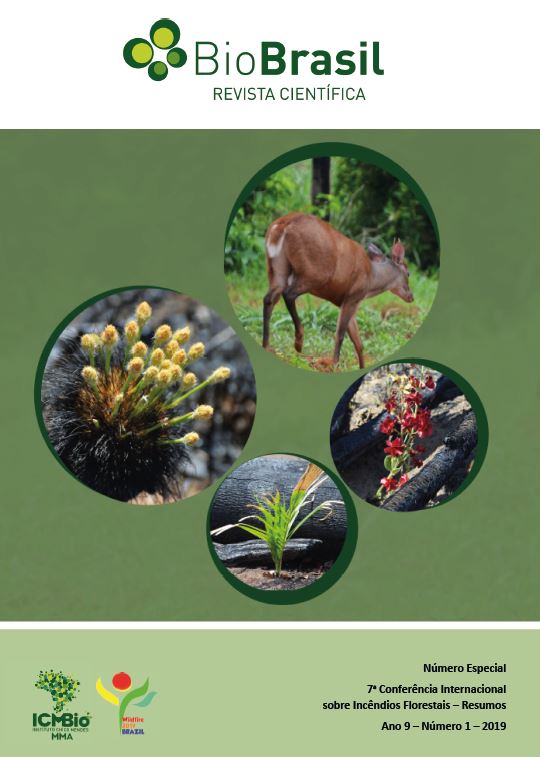Predictive distribution modeling of forest fire in Melghat Tiger Reserve of Central India an Home to Large Predators in India
DOI:
https://doi.org/10.37002/biodiversidadebrasileira.v9i1.1187Keywords:
MaxEnt, Forest Fire, Modeling, MTR, TigerAbstract
Melghat Tiger Reserve (MTR) is a most dramatic ecosystem in central India having dry deciduous forests that beholds one of the viable population of tigers. This area contains many endemic, rare and endangered species of flora and fauna. Periodic Forest fire during summer in this region is common as temperatures rise to 45°C. Forest fire is impacting the behavioral as well as ecological traits of tigers (Panthera tigris) and making the habitat inhabitable. Moreover, the post-fire impacts are much more hazardous since the micro and macro habitat characteristics directly affect the tiger habitat by depleting the prey species which directly impacts the tiger by motivating them to move towards human habitations resulting in man-animal conflict in the form of livestock depredation and human attacks. Early forest fire prediction through mapping the risk zones can help minimize the fire frequency and manage forest fires thereby minimizing losses. MaxEnt ecological niche modeling framework was used to predict the potential areas under fire across the landscape and to identify the key environmental variables associated with fire occurrence. A total of n=129 historical spatiotemporally independent fire occurrence locations were used after auto-correlation testing. 28 bioclimatic environmental variables were used including temperature, precipitation, forest type, forest canopy density, slope, aspect, elevation, and anthropogenic variables. Nineteen variables contributed 98.6% towards predicting the occurrence of fire. The accuracy of the model was assessed using the Area Under Curve and to assess the variables importance jackknife procedure was adopted. The area under the curve (AUC) score was (0.923) for the training data from our model, which indicates a moderate to the excellent predictive ability of the model. The resulted map was classified into three categories Highly, moderately and least susceptible to fire based on the probability value and the area under each category were found to be 11.23%, 34.60%, and 54.17% respectively. The result shows that the areas having dry-deciduous forest with moderate canopy density and near to villages are highly susceptible to fire. The areas identified as highly and moderately susceptible to fire can be used for preparatory planning for the management of forest fire in MTR.
Downloads
Downloads
Published
Issue
Section
License
Copyright (c) 2021 Biodiversidade Brasileira - BioBrasil

This work is licensed under a Creative Commons Attribution-NonCommercial-NoDerivatives 4.0 International License.
Os artigos estão licenciados sob uma licença Creative Commons Atribuição-NãoComercial-SemDerivações 4.0 Internacional (CC BY-NC-ND 4.0). O acesso é livre e gratuito para download e leitura, ou seja, é permitido copiar e redistribuir o material em qualquer mídia ou formato.











